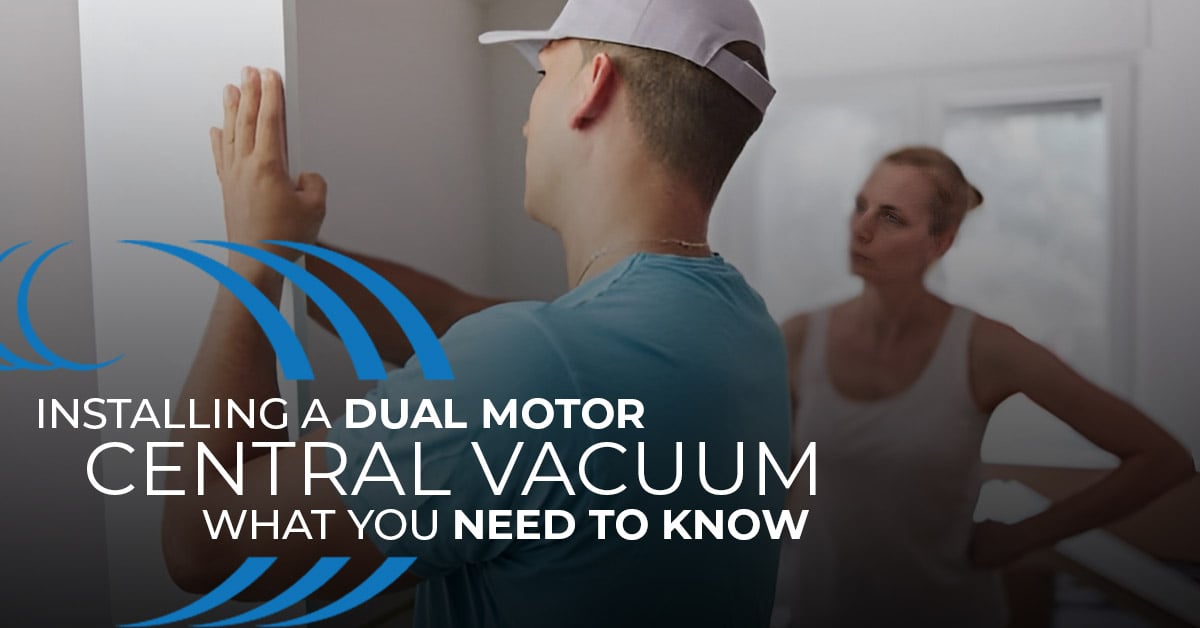
Boosting Productivity in Office Buildings with Central Vacuum
In today’s fast-paced work environment, maintaining a clean and organized office space is crucial for productivity. Office buildings often struggle with keeping their premises clean

Investing in a dual motor central vacuum system can significantly enhance your home’s cleanliness and improve air quality. However, proper installation is crucial to ensure optimal performance and longevity. This article serves as your guide to understanding and installing a dual motor central vacuum system.
A dual motor central vacuum system installation involves several steps. While professional installation is often recommended, if you’re handy, you might consider a DIY approach. Here’s a basic outline of the process:
Planning: Determine the most convenient location for the power unit, usually in a garage or basement. Plan out where the inlet valves will go, ensuring they are accessible from every part of the house with the vacuum hose.
Installation of Inlet Valves and Tubing: Drill holes in the walls for the inlet valves, run PVC tubing through the walls and ceilings, connecting each inlet valve to the central power unit.
Power Unit Installation: Install the power unit at the chosen location and connect it to the house’s electrical system.
Remember, every home is unique, so your installation process may vary slightly based on your specific needs and home layout.
Here are some tips to ensure a smooth installation process:
Measure Accurately: Before starting the installation, measure the distance between each inlet valve and the central power unit to determine the amount of PVC tubing needed.
Follow Local Building Codes: Ensure the installation adheres to local building codes, particularly regarding electrical connections.
Consider Professional Help: If you’re not comfortable with DIY installation, consider hiring a professional. They have the experience and knowledge to install the system efficiently and correctly.
Installing a dual motor central vacuum system can be more complex than a single motor system due to its increased power and components. The power unit is typically larger and heavier, requiring a secure mounting location.
Additionally, dual motor systems may require a dedicated electrical circuit to handle the increased power load. Make sure to check the manufacturer’s specifications for any special requirements.
When you’re ready to start the installation, follow these steps:
Install the Power Unit: Securely mount the power unit in your chosen location, ensuring it has adequate ventilation.
Run the Tubing: Connect the central power unit to each inlet valve using PVC tubing, ensuring airtight connections.
Install Inlet Valves: Install the inlet valves in your predetermined locations, connecting them to the tubing.
Connect to Electrical Supply: Connect the power unit to your home’s electrical supply, following the manufacturer’s instructions.
Test the System: Finally, test the system to ensure it operates correctly.
Before starting the installation, gather all necessary tools and materials. This includes the central vacuum system, PVC tubing, inlet valves, mounting hardware, and any required electrical components.
Also, make sure to read the manufacturer’s installation guide thoroughly. It will provide specific instructions based on your particular model.
In conclusion, while installing a dual motor central vacuum system can be a significant project, the benefits of improved cleaning power and indoor air quality make it worthwhile. Whether you choose to DIY or hire a professional, understanding the installation process can help ensure your new system is installed correctly and efficiently.

In today’s fast-paced work environment, maintaining a clean and organized office space is crucial for productivity. Office buildings often struggle with keeping their premises clean

Central vacuums in animal shelters & vet clinic: Explore how these systems boost hygiene, efficiency, and air quality.

In the world of home entertainment, a home theater is a luxury that many homeowners dream of. It’s an immersive experience that brings the magic

A central vacuum system is a significant investment that promises convenience, powerful suction, and improved indoor air quality. However, choosing the right central vacuum hose
Our home automation products are at the forefront of technology, offering a blend of convenience, security, and efficiency. As a Homewave dealer, you’ll be part of a network transforming homes into smart, futuristic spaces.
Embark on this rewarding journey with us and leverage the power of innovative technology.
Please fill out this form and become a Homewave Dealer.